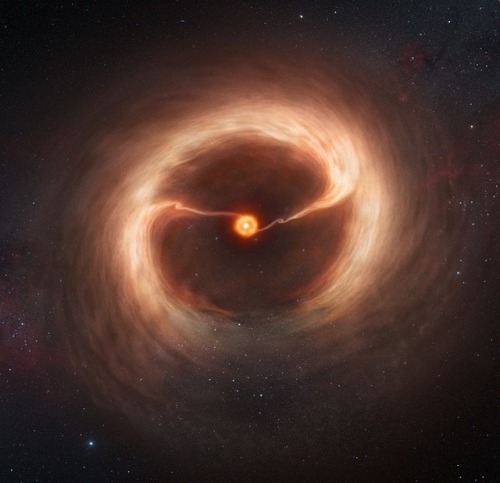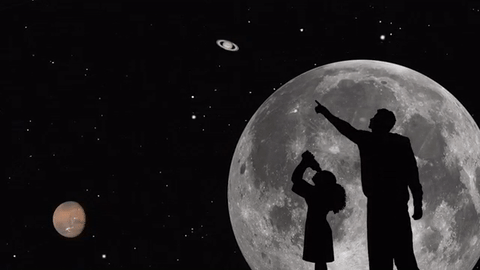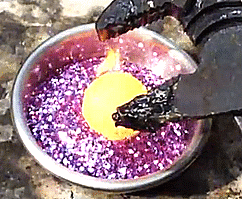Primitive Plants Are The Latest Forms Of Earth Life To Show They Can Survive In The Harshness Of Space,

Primitive plants are the latest forms of Earth life to show they can survive in the harshness of space, and for many months. Cold-loving algae from the Arctic Circle have joined the space-travelling club, alongside bacteria, lichens and even simple animals called tardigrades.
Preliminary studies of the algae after their return to Earth from the International Space Station lend some weight to the “panspermia” theory, that comets and meteorites could potentially deliver life to otherwise sterile planets. The results also provide insights into the potential for human colonies on distant planets to grow crops brought from Earth.
The algae were of the Sphaerocystis species, codenamed CCCryo 101-99, and were returned to Earth in June last year after spending 530 days on a panel outside the ISS. While space-borne, they withstood the vacuum, temperatures ranging from -20 °C at night to 47.2 °C during the day, plus perpetual ultraviolet radiation of a strength that would destroy most life on Earth if not filtered out by the atmosphere.
“I’m sure that plants of many kinds have been on the ISS before, but on the inside, not the outside,” says Thomas Leya of the Fraunhofer Institute for Cell Therapy and Immunology in Potsdam, Germany, who organised the algae experiment. “As far as I know, this is the first report of plants exposed on the surface of the space station.”
Continue Reading.
More Posts from Drunkscience4u and Others

Disc of gas around HD 142527
This artist’s impression shows the disc of gas and cosmic dust around the young star HD 142527. Astronomers using the Atacama Large Millimeter/submillimeter Array (ALMA) telescope have seen vast streams of gas flowing across the gap in the disc. These are the first direct observations of these streams, which are expected to be created by giant planets guzzling gas as they grow, and which are a key stage in the birth of giant planets.
Credit: ESO / Atacama Large Millimeter/submillimeter Array

A Visualisation of the Recent Rapid Change in Temperature.
(GreenPeace)


Rebecca is loving this Snapchat filter from IWD 2017!!
Largest Batch of Earth-size, Habitable Zone Planets
Our Spitzer Space Telescope has revealed the first known system of seven Earth-size planets around a single star. Three of these planets are firmly located in an area called the habitable zone, where liquid water is most likely to exist on a rocky planet.

This exoplanet system is called TRAPPIST-1, named for The Transiting Planets and Planetesimals Small Telescope (TRAPPIST) in Chile. In May 2016, researchers using TRAPPIST announced they had discovered three planets in the system.

Assisted by several ground-based telescopes, Spitzer confirmed the existence of two of these planets and discovered five additional ones, increasing the number of known planets in the system to seven.

This is the FIRST time three terrestrial planets have been found in the habitable zone of a star, and this is the FIRST time we have been able to measure both the masses and the radius for habitable zone Earth-sized planets.
All of these seven planets could have liquid water, key to life as we know it, under the right atmospheric conditions, but the chances are highest with the three in the habitable zone.

At about 40 light-years (235 trillion miles) from Earth, the system of planets is relatively close to us, in the constellation Aquarius. Because they are located outside of our solar system, these planets are scientifically known as exoplanets. To clarify, exoplanets are planets outside our solar system that orbit a sun-like star.

In this animation, you can see the planets orbiting the star, with the green area representing the famous habitable zone, defined as the range of distance to the star for which an Earth-like planet is the most likely to harbor abundant liquid water on its surface. Planets e, f and g fall in the habitable zone of the star.
Using Spitzer data, the team precisely measured the sizes of the seven planets and developed first estimates of the masses of six of them. The mass of the seventh and farthest exoplanet has not yet been estimated.

For comparison…if our sun was the size of a basketball, the TRAPPIST-1 star would be the size of a golf ball.
Based on their densities, all of the TRAPPIST-1 planets are likely to be rocky. Further observations will not only help determine whether they are rich in water, but also possibly reveal whether any could have liquid water on their surfaces.
The sun at the center of this system is classified as an ultra-cool dwarf and is so cool that liquid water could survive on planets orbiting very close to it, closer than is possible on planets in our solar system. All seven of the TRAPPIST-1 planetary orbits are closer to their host star than Mercury is to our sun.

The planets also are very close to each other. How close? Well, if a person was standing on one of the planet’s surface, they could gaze up and potentially see geological features or clouds of neighboring worlds, which would sometimes appear larger than the moon in Earth’s sky.

The planets may also be tidally-locked to their star, which means the same side of the planet is always facing the star, therefore each side is either perpetual day or night. This could mean they have weather patterns totally unlike those on Earth, such as strong wind blowing from the day side to the night side, and extreme temperature changes.

Because most TRAPPIST-1 planets are likely to be rocky, and they are very close to one another, scientists view the Galilean moons of Jupiter – lo, Europa, Callisto, Ganymede – as good comparisons in our solar system. All of these moons are also tidally locked to Jupiter. The TRAPPIST-1 star is only slightly wider than Jupiter, yet much warmer.
How Did the Spitzer Space Telescope Detect this System?
Spitzer, an infrared telescope that trails Earth as it orbits the sun, was well-suited for studying TRAPPIST-1 because the star glows brightest in infrared light, whose wavelengths are longer than the eye can see. Spitzer is uniquely positioned in its orbit to observe enough crossing (aka transits) of the planets in front of the host star to reveal the complex architecture of the system.

Every time a planet passes by, or transits, a star, it blocks out some light. Spitzer measured the dips in light and based on how big the dip, you can determine the size of the planet. The timing of the transits tells you how long it takes for the planet to orbit the star.

The TRAPPIST-1 system provides one of the best opportunities in the next decade to study the atmospheres around Earth-size planets. Spitzer, Hubble and Kepler will help astronomers plan for follow-up studies using our upcoming James Webb Space Telescope, launching in 2018. With much greater sensitivity, Webb will be able to detect the chemical fingerprints of water, methane, oxygen, ozone and other components of a planet’s atmosphere.
At 40 light-years away, humans won’t be visiting this system in person anytime soon…that said…this poster can help us imagine what it would be like:

Make sure to follow us on Tumblr for your regular dose of space: http://nasa.tumblr.com

Researchers at King’s College London found that the drug Tideglusib stimulates the stem cells contained in the pulp of teeth so that they generate new dentine – the mineralised material under the enamel.
Teeth already have the capability of regenerating dentine if the pulp inside the tooth becomes exposed through a trauma or infection, but can only naturally make a very thin layer, and not enough to fill the deep cavities caused by tooth decay.
But Tideglusib switches off an enzyme called GSK-3 which prevents dentine from carrying on forming.
Scientists showed it is possible to soak a small biodegradable sponge with the drug and insert it into a cavity, where it triggers the growth of dentine and repairs the damage within six weeks.
The tiny sponges are made out of collagen so they melt away over time, leaving only the repaired tooth.
Everyone should check out drunkscience4u.tumblr.com because it's a mix of science facts and science puns, which is the best combination.
from Drunk Science http://ift.tt/2kY0TL7 via IFTTT
What’s Up for February?
What’s Up for February? Look to the night sky for a brighter Venus, Comet 45P, asteroid Vesta and more.

Tonight, you can see Venus along with a crescent moon, Mars and Uranus just after sunset. No binoculars needed!

While there are no meteor showers this month, behold the zodiacal light!

This phenomenon is caused when sunlight reflects off dust particles in the plane of our solar system. Use Venus and Mars as a cone-shaped guide on the western horizon in late February and March.

Comet 45P will be visible using binoculars and telescope and will make its closest approach to Earth on February 11.

Finally, bright asteroid Vesta can be found in the constellation Pisces.
Follow us on Tumblr for your regular dose of space: http://nasa.tumblr.com
Can you lick the science? An abbreviated list.
Genetics: Do not. Unless cheek swabs?
Chemistry: NO!!!!! DO NOT!!!!!!
Archaeology: Perhaps. But might be human bone.
Geology: Sometimes needed, sometimes dangerous
Psychology: Best not.
Physics: ????????? How??????
Zoology: In zoology, science licks you.
-
 theonewiththe-whales liked this · 6 years ago
theonewiththe-whales liked this · 6 years ago -
 neurodivergentspacequeen reblogged this · 6 years ago
neurodivergentspacequeen reblogged this · 6 years ago -
 autopsy-mauve liked this · 6 years ago
autopsy-mauve liked this · 6 years ago -
 waldfeuer liked this · 7 years ago
waldfeuer liked this · 7 years ago -
 jewishcity reblogged this · 7 years ago
jewishcity reblogged this · 7 years ago -
 drflashbang liked this · 7 years ago
drflashbang liked this · 7 years ago -
 skyloftian77 liked this · 7 years ago
skyloftian77 liked this · 7 years ago -
 theambassaderp1-blog liked this · 7 years ago
theambassaderp1-blog liked this · 7 years ago -
 craftinghellkite liked this · 7 years ago
craftinghellkite liked this · 7 years ago -
 selesnyapokemonprofessor reblogged this · 7 years ago
selesnyapokemonprofessor reblogged this · 7 years ago -
 selesnyapokemonprofessor liked this · 7 years ago
selesnyapokemonprofessor liked this · 7 years ago -
 thatwarlockguy reblogged this · 7 years ago
thatwarlockguy reblogged this · 7 years ago -
 thatwarlockguy liked this · 7 years ago
thatwarlockguy liked this · 7 years ago -
 polyphylactery liked this · 7 years ago
polyphylactery liked this · 7 years ago -
 niv-mon liked this · 7 years ago
niv-mon liked this · 7 years ago -
 animar-seal-of-elephants reblogged this · 7 years ago
animar-seal-of-elephants reblogged this · 7 years ago -
 sarah-paulsons-bottom-lip liked this · 7 years ago
sarah-paulsons-bottom-lip liked this · 7 years ago -
 magikyle reblogged this · 7 years ago
magikyle reblogged this · 7 years ago -
 magikyle liked this · 7 years ago
magikyle liked this · 7 years ago -
 noodleghoul reblogged this · 7 years ago
noodleghoul reblogged this · 7 years ago -
 loki-liesmith-silvertongue-blog liked this · 7 years ago
loki-liesmith-silvertongue-blog liked this · 7 years ago -
 purplehost reblogged this · 8 years ago
purplehost reblogged this · 8 years ago -
 necessarytango reblogged this · 8 years ago
necessarytango reblogged this · 8 years ago -
 mal-jour liked this · 8 years ago
mal-jour liked this · 8 years ago -
 windcalling reblogged this · 8 years ago
windcalling reblogged this · 8 years ago -
 exoriaterrae liked this · 8 years ago
exoriaterrae liked this · 8 years ago -
 aglayalilich liked this · 8 years ago
aglayalilich liked this · 8 years ago -
 areyouahauntedpotato liked this · 8 years ago
areyouahauntedpotato liked this · 8 years ago -
 mintyhootax reblogged this · 8 years ago
mintyhootax reblogged this · 8 years ago -
 thesplendidsnout liked this · 8 years ago
thesplendidsnout liked this · 8 years ago -
 pelirroja-peligrosa liked this · 8 years ago
pelirroja-peligrosa liked this · 8 years ago -
 tempoprestissimo reblogged this · 8 years ago
tempoprestissimo reblogged this · 8 years ago -
 agreyjaywooo reblogged this · 8 years ago
agreyjaywooo reblogged this · 8 years ago -
 damightymidget liked this · 8 years ago
damightymidget liked this · 8 years ago -
 upsofloatingmanybellsdown liked this · 8 years ago
upsofloatingmanybellsdown liked this · 8 years ago -
 sambyotic reblogged this · 8 years ago
sambyotic reblogged this · 8 years ago -
 hurrypollo-blog reblogged this · 8 years ago
hurrypollo-blog reblogged this · 8 years ago -
 thatonenerdguyishere-blog liked this · 8 years ago
thatonenerdguyishere-blog liked this · 8 years ago -
 eeveedream reblogged this · 8 years ago
eeveedream reblogged this · 8 years ago -
 eeveedream liked this · 8 years ago
eeveedream liked this · 8 years ago -
 crystallinefeathers reblogged this · 8 years ago
crystallinefeathers reblogged this · 8 years ago
The official page of Drunk Science! An enthusiastic host performs simple experiments and then humorously explains the science behind the result, all while visibly drunk.
126 posts


